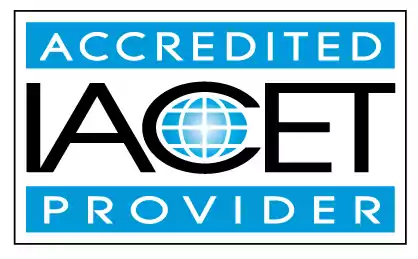Identify different learning styles of young children
Discover the different learning styles of young children and gain insights into the appropriate practices for identifying and demonstrating their unique strengths. Explore a variety of age-appropriate activities that foster growth and development, supporting children at every stage of their early childhood education journey. Whether you're a parent or an educator, our page offers valuable resources for understanding and engaging with young learners in child care centers.Trainings incorporating this outcome
CDA Subject Areas
Proficiency Level
Target Audience
Topic Areas
States
Alabama (12) Alaska (12) Alberta (12) Arizona (11) Arkansas (7) Australia (12) British Columbia (3) California (12) Colorado (12) Connecticut (12) Delaware (12) District of Columbia (11) Florida (11) Georgia (10) Hawaii (12) Idaho (12) Illinois (9) Indiana (12) Iowa (12) Jamaica (10) Kansas (11) Kentucky (7) Louisiana (12) Maine (11) Manitoba (10) Maryland (12) Massachusetts (12) Michigan (12) Minnesota (10) Mississippi (12) Missouri (6) Montana (12) Nebraska (10) Nevada (10) New Hampshire (12) New Jersey (7) New Mexico (12) New York (7) Newfoundland and Labrador (11) North Carolina (7) North Dakota (11) Nova Scotia (7) Ohio (11) Oklahoma (11) Ontario (10) Oregon (10) Pennsylvania (9) Prince Edward Island (7) Puerto Rico (11) Quebec (7) Rhode Island (11) Saskatchewan (12) South Carolina (6) South Dakota (12) Tennessee (6) Texas (12) Thailand (10) United Kingdom (10) Utah (11) Vermont (12) Virgin Islands (10) Virginia (12) Washington (12) West Virginia (12) Wisconsin (9) Wyoming (8)
120 hours courses
102 hours courses
45 hours courses
6 hours courses
5 hours courses
3 hours courses
Related Outcomes
- Identify appropriate practices for identify and demonstrate an children: Identify examples of appropriate activities for different ages
- Identify different learning styles and how to differentiate instruction to meet a child's needs.
- Identify appropriate practices for identify and demonstrate an children: Identify importance of individual planning
- Identify learning styles
- Distinguish how to adapt arts and crafts for younger children and children with different abilities.
- Identify strategies for the child care provider that will promote successful child development. Identify strategies for working with children with special needs
- Identify the signs of traumatic brain injury in infants and young children.
- Participants will be able to identify resources to help children discover, learn, and experience in a natural play environment.
- Define resilience and identify ways it helps young children overcome toxic stressors.
- Identify the importance of math instruction with young children.
- Demonstrate an understanding of development in children 3-5 years of age and their learning styles.
- Identify appropriate practices for identify and demonstrate an children: Define Developmentally Appropriate Practice
- Identify common interaction strategies to help promote a positive classroom environment for young children.
- Identify different types of play in children ages 2 to 5.
- Identify the different learning concepts related to block play.
- Identify resources to help children discover, learn, and experience in a natural play environment.
- Identify the most common sources of stress for young children.
- Demonstrate understanding of how learning occurs in children and the role of play in learning
- Demonstrate an understanding of the different learning styles of adult learners.
- Identify appropriate practices for identify and demonstrate an children: components of a lesson plan
Related Articles
- Learning Styles
- Cross-Cultural Toilet Training Practices
- Child care education
- The Ultimate Guide: Creating Effective Lesson Plans for Child Care Providers
- The Power of Play: Unleashing Potential in Early Childhood Education
- Exploring the World: Fun and Educational Social Studies Activities for Preschoolers
- Managing Behaviors in the Early Childhood Education Classroom
- The Vital Role of Early Childhood Education Teachers
- Unlocking the Power of DAP
- Creating a Safe Environment for Children in Childcare Centers
- Tiny Tots, Big Learning: Crafting Curriculums for the Littlest Learners!
- Counting Candy Canes: The STEM of Holiday Fun for Early Learners
- Trauma-Informed Care: Why Your Classroom Isn’t Complete Without a Little Extra Empathy
- Your Impact as an Early Educator and Online Resources
- Daycare Training 101: Building a Safe, Fun, and Educational Environment
- Play, Explore, Grow: Fresh Curriculum Ideas to Spark Joy in Your Preschool or Daycare
- How Can We Adapt Our Teaching Approaches to Meet Different Learning Styles in Young Children?
 12 CEUs
12 CEUs